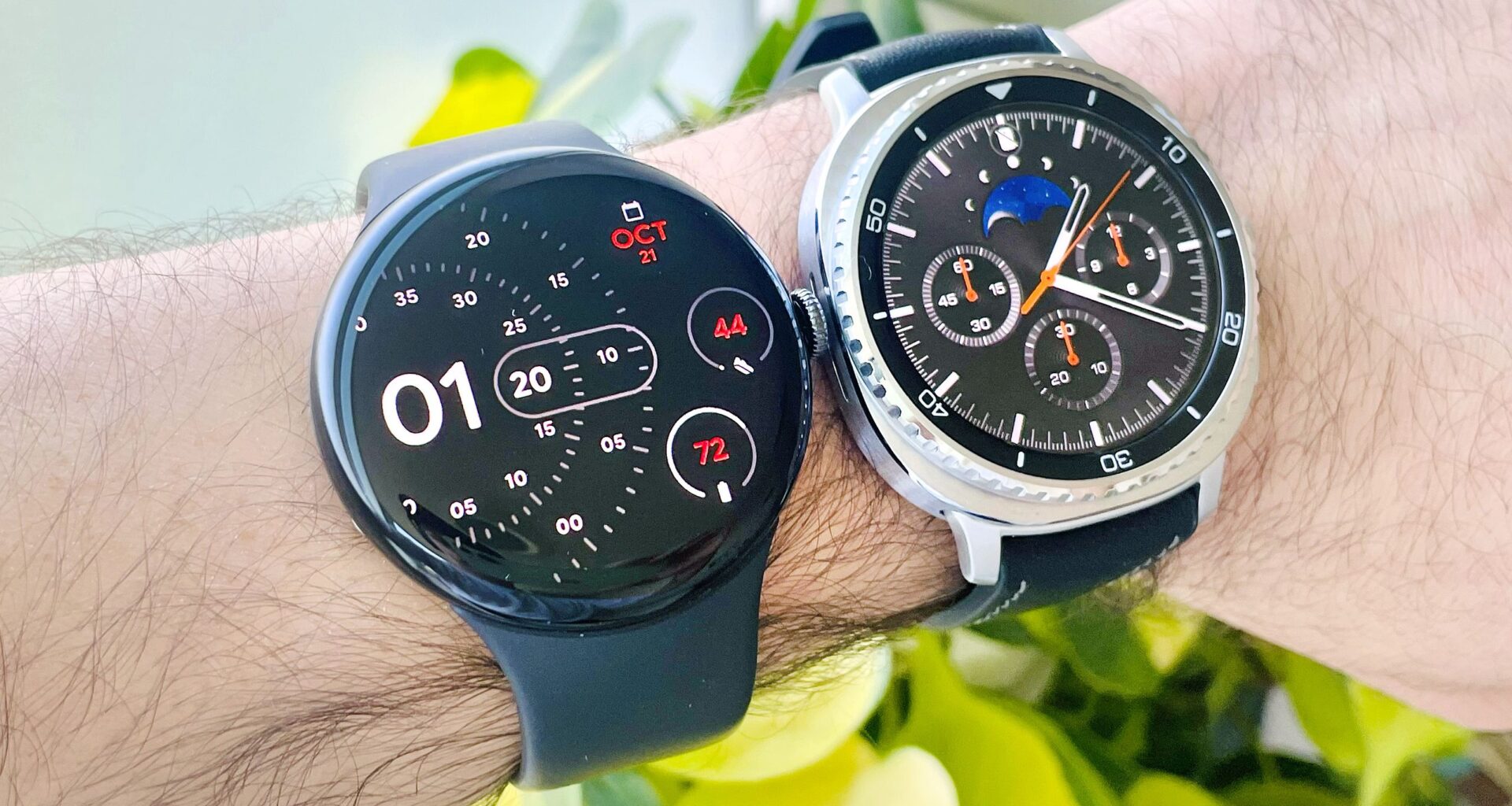There’s no doubt about it. The Google Pixel Watch 4 and Samsung Galaxy Watch 8 — specifically the Classic edition — are the best smartwatches for Android users in 2025. But which is the more accurate fitness tracker?
With similar price tags, features (including Google’s excellent Gemini AI voice assistant) and onboard tech, I’d happily recommend either model, as I reviewed both for Tom’s Guide. However, in the spirit of competition, I wore the Samsung Galaxy Watch 8 and Google Pixel Watch 4 during an hour-long walk around Seattle, Washington, to compare their workout data.
As a control, I manually counted my steps — with some assistance from my trusty old school tally counter — and ran Strava on my iPhone 12 mini for distance, pace, and elevation data.
You may like
Samsung Galaxy Watch 8 vs Pixel Watch 4: Quick comparison

(Image credit: Dan Bracaglia/Tom’s Guide)
Both devices start at $349 and come in a variety of case sizes — 40mm and 44mm for the Samsung and 41mm and 45mm for the Pixel Watch — and with or without cellular connectivity. The Galaxy Watch 8 is additionally offered in a Classic edition with a larger battery capacity and rotating bezel (this is the model I tested), something you won’t find on the latest Pixel Watch range.
Seriously bright and responsive touchscreens adorn both the latest Pixel Watch and Galaxy Watch models. The displays are paired with physical buttons along the sides of the cases. While the Pixel Watch 4 lasted longer than the Galaxy Watch 8 in my testing, both easily surpassed 40 hours or more per charge.
Fitness, wellness and safety tools are equally impressive across the board for both watches. That said, only the Pixel Watch 4 offers a Loss of Pulse Detection feature. Plus, the LTE versions of the Pixel Watch 4 also support a new satellite messaging feature for off-the-grid emergency communications.
You can use either flagship smartwatch to track your sleep, though I find Samsung’s sleep reports slightly more detailed and with more actionable advice.
Google’s Gemini AI voice assistant comes standard on both watches, but it’s easier to ‘wake’ using the Pixel Watch 4 thanks to an exclusive, new raise-the-wrist gesture control.
When it comes to monitoring outdoor workouts, the Pixel Watch 4 and Galaxy Watch 8 each boast dual-band GPS, onboard altimeters for monitoring elevation changes, and similarly advanced holistic sensor arrays. With no real technology advantage on either side, this walk test showdown is about as evenly matched as they get.
You may like
Samsung Galaxy Watch 8 vs Pixel Watch 4: Walk test results
With the Pixel Watch 4 on my left wrist and the Galaxy Watch 8 on my right, I embarked on my roughly 1-hour walk around autumn-kissed Seattle. To help keep a precise count of my paces, I noted every hundred step taken with a click of my tally counter before starting again at one. A pair of the best noise-canceling headphones also helped to eliminate distractions.
Swipe to scroll horizontallyPixel Watch 4: Walk test comparison
Pixel Watch 4
Galaxy Watch 8
Control
Steps
6,529 steps
6,503 steps
6,500 steps (manual count)
Distance
3.49 miles
3.48 miles
3.57 miles (Strava)
Elevation gain
410 feet
353 feet
361 feet (Strava)
Average pace
17 mins 42 secs per mile
16 mins 55 secs per mile
16 mins 16 secs per mile (Strava)
Average heart rate
127 bpm
130 bpm
n/a
Max heart rate
171 bpm
173 bpm
n/a
Calories burned
557 calories
418 calories
n/a
Battery drain
7%
5%
n/a
Across the board — with only a few exceptions — the fitness tracking data from these two flagship smartwatch models impresses. After an hour of walking, the fact that both devices produced step count totals within 30 steps of my actual tally blows me away.
The watches measured slightly less distance covered compared to Strava, but the discrepancy is minor and no cause for concern. On the other hand, the Pixel Watch 4’s elevation data is a little funky. While the Galaxy Watch was within 8 feet of the control data (well within a reasonable margin of error), the Google wearable seemingly overcounted by 49 feet.
Samsung’s average pace data is a little slower than Strava’s, and Google’s is significantly more sluggish. What gives? My hunch is that Google’s average pace metric reflects an elapsed pace versus a moving pace. While Samsung and Strava provide both moving and elapsed pace metrics, Google provides just one (and doesn’t note which it is).
Things get cheerier as we move on to heart rate data, with each wearable producing similar enough averages and maxes. For what it’s worth, my maximum heart rate during this walk test occurred while I powered up the steepest hill in Seattle.
Lastly, the Pixel Watch noted more calories burned and also consumed a little more battery during the one-hour walk. The latter surprised me, given that the Pixel Watch 4 ultimately proved to be the longer-lasting device in my greater testing.
Samsung Galaxy Watch 8 vs Pixel Watch 4: And the winner is…

(Image credit: Tom’s Guide)
With a remarkably accurate step count total that’s just three steps off from my actual total, along with more accurate elevation and pace data, the Samsung Galaxy Watch 8 beats the Google Pixel Watch 4 in today’s head-to-head accuracy battle.
Still, the Pixel Watch 4 performed admirably across the board, except for seemingly inflated elevation data. That said, I plan to continue testing the Pixel Watch 4’s fitness tracking chops to find out if the climb metric hiccup was an anomaly or something more chronic. Stay tuned for a Pixel Watch 4 vs. Apple Watch 11 comparison.
Until next time, get your steps in!
Follow Tom’s Guide on Google News to get our up-to-date news, how-tos, and reviews in your feeds. Make sure to click the Follow button.
More from Tom’s Guide
Today’s best Samsung Galaxy Watch 8 and Google Pixel Watch 4 deals
